HESSTON – Mid-October can be tantalizing.
You know what’s just around the corner: fall’s abundant tapestry of colorful elms and maples.
But in south-central Kansas, summer can stubbornly hang on into early November.
While we’re waiting for that brilliant autumn foliage, there are still lingering examples of summer’s bright blooms to be found — if you know where to look.
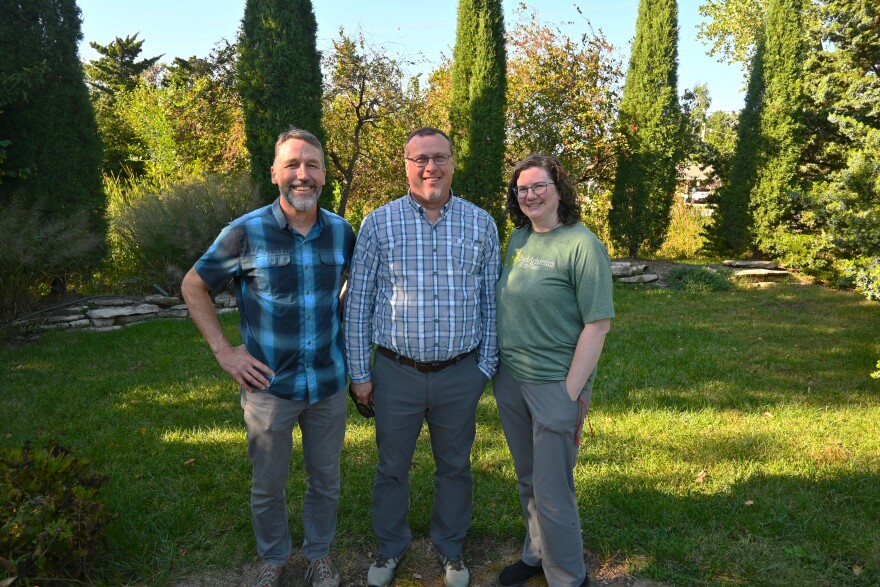

I had the chance to discover what this time of transition can mean during a visit to Dyck Arboretum in Hesston. It was still warm but the signs of the changing seasons were everywhere.
“So what you're seeing now is … kind of the culmination of, kind of the crescendo of the prairie garden,” said Scott Vogt, the arboretum’s executive director.
“You have a lot of the grasses that are in seed head, a lot of the asters that are blooming this time of year.”
Dyck Arboretum could be considered a cross between a botanical garden and a habitat for native species, including decorative plants and tallgrass prairie. But it has its own spin.
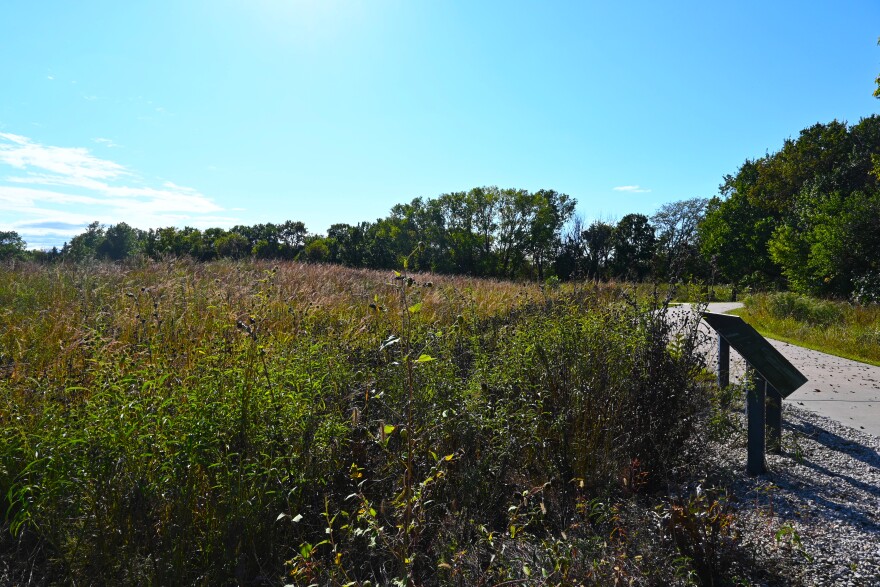
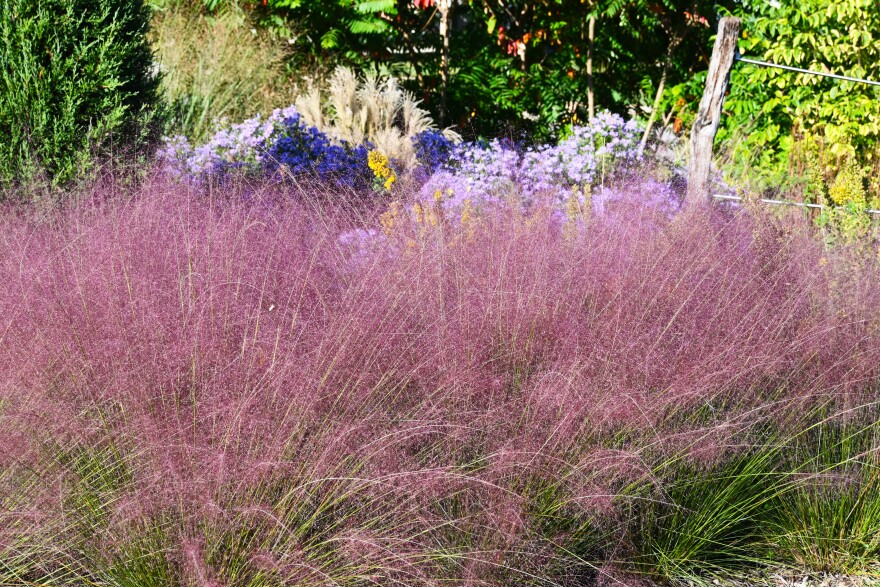
“The balance of humans controlling the landscape is a little bit different,” said Janelle Flory Shrock, the arboretum’s public engagement coordinator.
“We're starting off with the design and … then you sort of co-create with nature this landscape that evolves over time.”
“Our mission is to cultivate transformative relationships between people and the land,” said Brad Guhr, the arboretum’s education coordinator.
“Where the people are part of the land that includes kind of equal interrelations with soils, plants, wildlife. We take that spirit and use it to connect to the natural history of this place.”


We set off from one of the two main buildings, framed by pretty, cultivated gardens of native plants. But a short way down the path, we turned a corner and there was an expanse of tallgrass prairie.
Scott said it used to be an alfalfa field. But the arboretum gathered seeds from more than 100 prairie remnants in the area to create their own.
“This prairie is not only a prairie reconstruction like almost none other in Kansas … but now it's also a learning landscape,” Brad said.
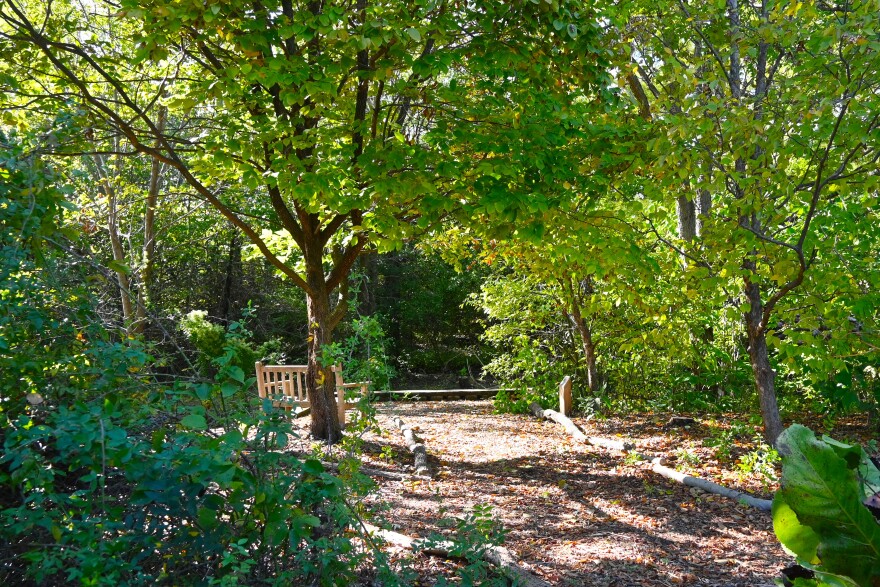
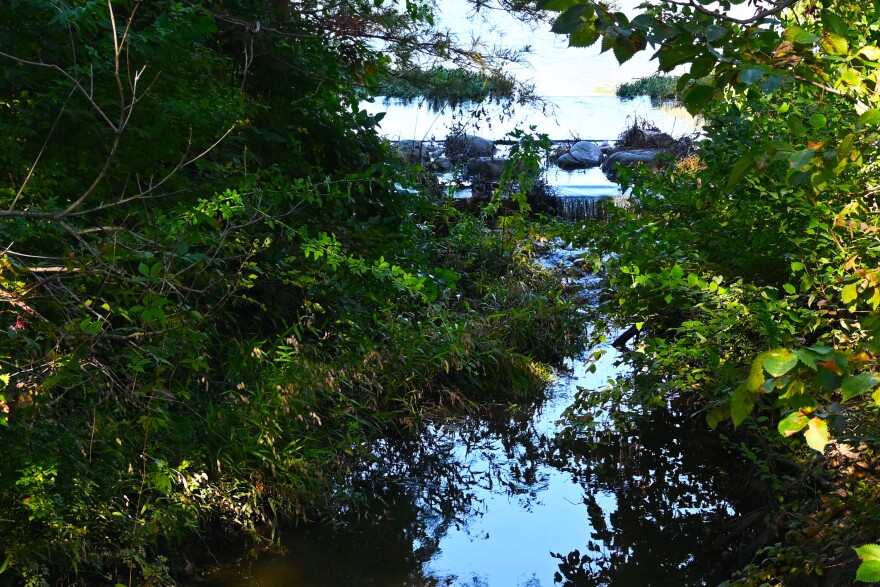
Past the prairie, the path entered a wooded area with cedars on one side and on the other, deciduous trees in a small thicket. The trees were just barely starting to turn while the sturdy asters were still a showy force of bright colors.
We crossed a bridge over a small stream and a waterfall, overflow from the arboretum’s small lake. There were more native plants and grasses mixed with roses. The asters are bright purple and white, surrounded by yellow sunflowers and vivid pink Muhly grass.
Also in there was a plaque with a quote by Aldo Leopold, considered the founder of modern wildlife management. The quote is one of Flory Schrock’s favorites.

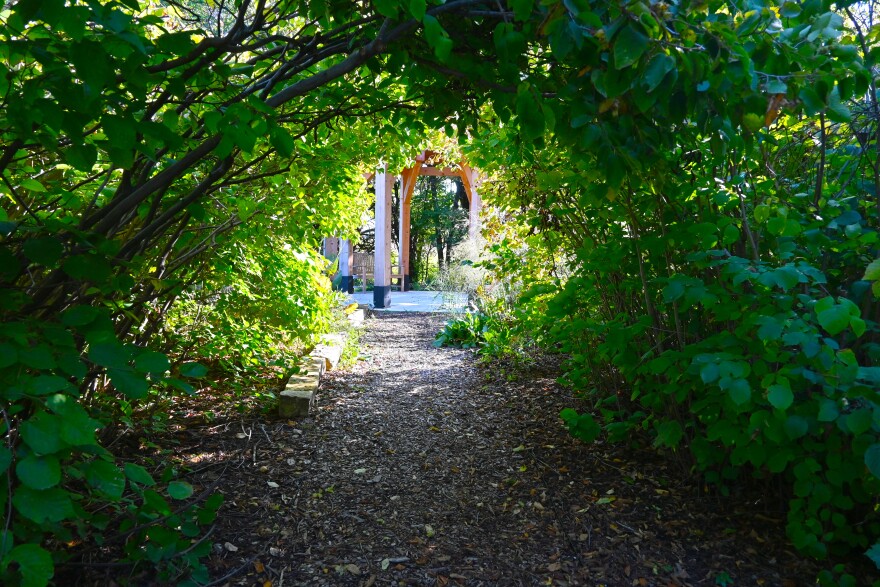
“ ‘What a thousand acres of Compass plant looked like when they tickled the bellies of the buffalo is a question never again to be answered and perhaps not even asked,’ ’’ she read.
The quote speaks to the mission of the arboretum. The days of the unending prairie are gone and untouched natural habitats are disappearing as our populations grow and suburbs spread further into the wild.
If we don’t take steps to preserve some of it, in the future, will we even know what we’re missing?



